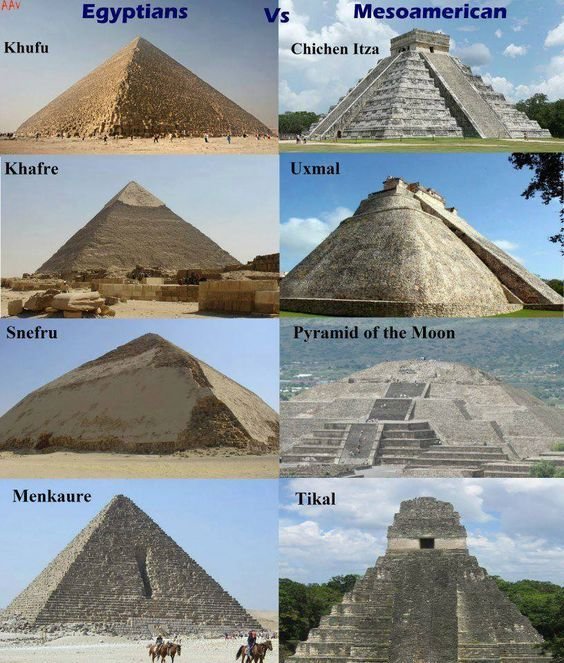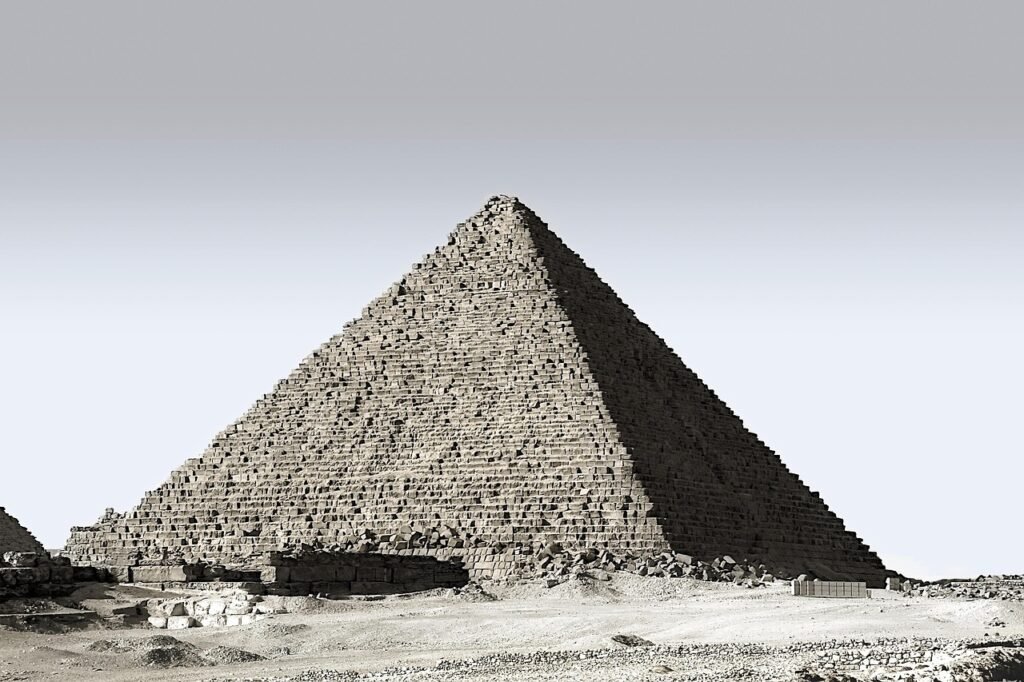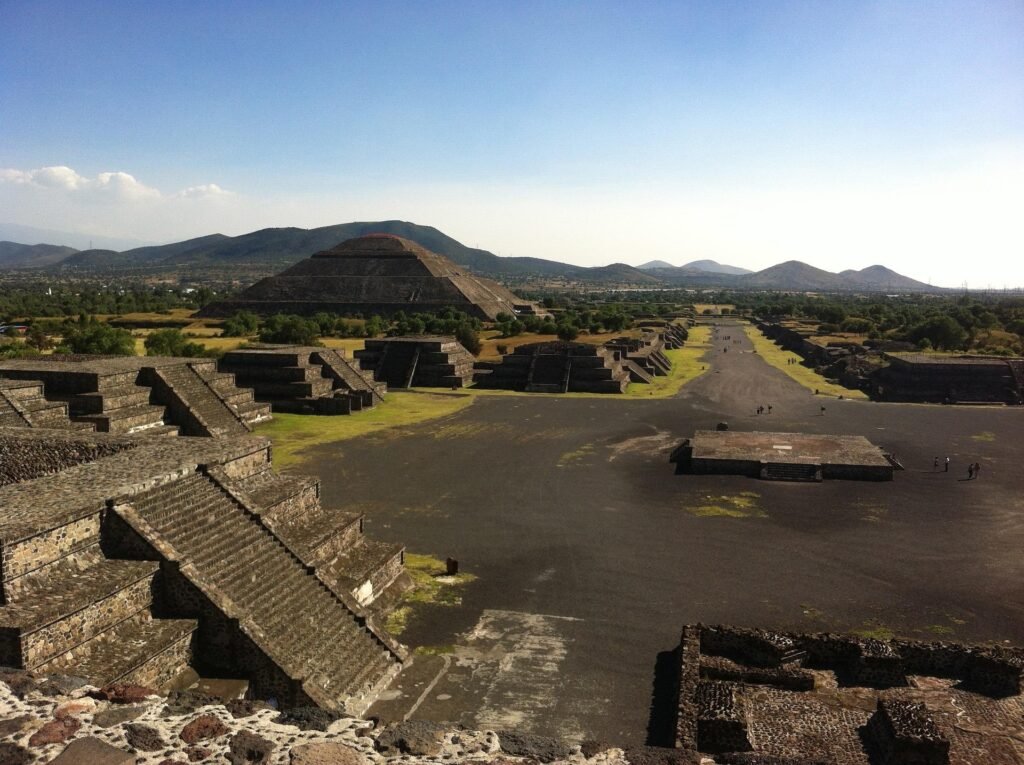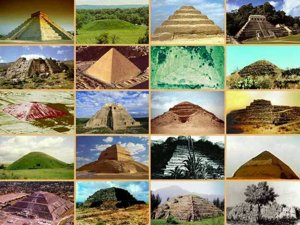The Distribution and Legacy of Pyramids: How Many Ancient Pyramids Are Located in the World?
.Perhaps the most globally distinguished structure made technologically by man is the pyramid. Its association with ancient Egypt is an oversimplification, as pyramidal structures exist across almost all continents and served various functions, including religious, ceremonial, and funerary functions. One frequently asked question is how many ancient pyramids are located in the world, and the answer reveals the vast reach of this architectural form. The focus of this article is ancient pyramids that existed in various parts of the world, their distribution, and their evolutionary importance.
What is a pyramid?

The polysynaptic polygonal figure that narrows off to a single apex is a pyramid. This includes ziggurats, step pyramids, and temple pyramids. The last two are of Mesoamerican and Giza origin, while the first is from Southeast Asia. Smooth-sided or convex-shaped pyramids (also referred to as gizaite) are also present.
How Many Ancient Pyramids Are Located in the World
1. Egypt

Total pyramids: More than 100 have been found and counting. Some people think there might be a total of 118 with new discoveries and reclassifications.
Famous examples: Djoser’s Step Pyramid located at Saqqara and the Giza Pyramids, Khufu, Khafre, and Menkaure.
- Sudan (Nubia)
Total pyramids: 200-250 is the estimated amount for the most ancient pyramids, which makes this the claim for the highest number.
Characteristics: Nubian pyramids tend to be taller and narrower than Egyptian pyramids.
- Mesoamerica (Mexico, Guatemala, Honduras, El Salvador, Belize)

Total: due to the sites from the Maya, Aztec, Olmec, and Toltec civilisations, there are several hundred, potentially over a thousand if smaller structures are considered.
Famous examples:
Mexico: Teotihuacan has its Pyramid of the Sun and Moon, Chichen Itza has El Castillo, and we also have the Great Pyramid of Cholula, which by volume is the largest in the world.
Guatemala: Tikal’s pyramids.
Honduras: Step pyramids at the Copán site.
- China

Total: Estimates suggest dozens, and over 30 have been documented, which means more could be covered by earth or thick vegetation.
Famous examples: “The pyramids of Xi’an” are famous because they hold the tomb of “Emperor Qin Shi Huang.”
Some more countries possess ancient or proto-pyramid structures.
Iraq (Ancient Mesopotamia) Numerous ziggurats (stepped pyramids)—not commonly referred to as “pyramids,” but comparable in shape and purpose. For example, the Ziggurat of Ur.
Greece: The small mysterious structure known as “The Pyramid of Hellinikon.”
Italy: “The Pyramid of Cestius,” located in Rome, was constructed during the Roman Empire.
Spain: The ‘pyramids of Güímar’ situated in Tenerife are from the Canary Islands.
Niger: Contains two known small pyramids and a statue resembling a sphinx.
Cambodia: Koh Ker is a stepped pyramid from the Khmer Empire.
Peru: Contains several coastal pre-Columbian pyramid complexes, “Huaca del Sol and Huaca de la Luna.”
Table: How Many Ancient Pyramids Are Located in the World
| Country/Region | Estimated No. of Pyramids | Notable Sites/Examples | Distinctive Features |
| Egypt | 100+ (some count up to 138) | Giza, Saqqara, Dahshur | Smooth-sided pyramids, stone construction |
| Sudan (Nubia) | 200-250 | Meroë, Napata | Tall, narrow pyramids, built for Kushite royalty |
| Mexico | 300+ (possibly many more) | Teotihuacan, Cholula, Chichen Itza | Step pyramids, temples, largest by volume |
| Guatemala | 20+ major, many minor | Tikal | Steep-sided, astronomical/ritual functions |
| Honduras | Several dozen | Copan | Maya step pyramids |
| Chaina | 30+ | Xi’an (Mausoleum of Qin Shi Huang) | China |
| Peru | Hundreds of mound complexes | Huaca del Sol, Carlal | Adobe brick construction, flat-topped |
| Iraq | Dozens of ziggurats | Ur, Babylon | Temples, stepped pyramids (ziggurats) |
| Italy | 1 | Pyramid of Cestius | Roman, marble-clad, funerary use |
| Spain (Canary Islands) | Several | Güímar pyramids | Lava stone step pyramids, origins debated |
| Niger | 2 | Zinder region | Little-studied, connected to Saharan trade routes |
| Cambodia | 1 (major) | Koh Ker | Step pyramid, later Khmer period |
| Greece | 1 (archaeologically confirmed) | Hellinikon | Small, limestone construction |
Continental Summaries
Table of Contents
Africa
Egypt and Sudan formed the nucleus of pyramid construction, initiating with the Third-Dynasty monument at Saqqara around 2700 BCE and extending to the dynamic funerary landscapes of Nubia. The Nubian pyramids, created under the Kingdom of Kush, far outnumber their Egyptian counterparts and exhibit a narrower, steeper profile that distinguishes them within the broader spectrum of pyramid architectural design.
The Americas
Mesoamerica witnessed the autonomous rise of pyramid forms among the Maya, Aztec, and Olmec. These step pyramids served multiple roles, including cultic, calendrical, and state-orientated functions. The Great Pyramid of Cholula, measured by aggregate volume, is the planet’s largest, while the twin pyramids of the Sun and the Moon at Teotihuacan rank among the heaviest. The distribution of hundreds, perhaps thousands, of lesser pyramids and earthen mounds stretches from central Mexico to the Honduran Highlands.
South America (Peru)
The Andean highlands, from the Moche to the earliest occupants of Caral, favoured wide, terraced adobe structures that approximate pyramidal forms; many of these still lie partially entombed by the desert.
Asia
In China, a discreet landscape of earthen mounds, designed as imperial burial platforms, assumes a pyramidal silhouette and is found by the thousands in the Xi’an basin and surrounding ancient capitals.
In Southeast Asia, the solitary, steep Koh Ker pyramid in Cambodia serves as a temple complex and is unusual among pyramidal forms worldwide for its explicit non-funerary intent.
Europe
Pyramidal architecture is rare. The most discussed examples are the Hellenistic mausoleum at Hellinikon in southern Greece and the Roman Pyramid of Cestius, both embedded in their respective funerary landscapes.
The emergence of pyramid forms in divergent geographic contexts ultimately reflects a convergence of functional and symbolic imperatives. Across these cultural domains, several recurrent motives can be discerned:
Mortuary function for sovereign or high-ranking individuals, evident in the monumental sepulchres of Egypt, the Nubian necropoleis, comparable Chinese royal tomb mounds, and the elevated funerary structures of the Roman Empire.
Civic or sacred nodes serving liturgical and cosmological purposes are manifest in the temple-pyramids of Mesoamerican city-states and the ziggurats of Mesopotamia that fused habitation of the divine and stratified urban design.
Celestial observation and temporal measurement were systematically incorporated in the pyramid geometry of the Maya and Aztec civilisations, as well as in the Egyptian cases where axial alignments facilitated hierarchical calendrical reckoning.
Spaces adjudicated for sacrificial practice or votive deposition are recurrent in Mesoamerican contexts, where staircases and vaults directed both ascent and rite, and in Mesopotamian sanctuaries, where the elevated base mediated the politics of offering.
The Difficulty of Counting Ancient Pyramids

Terminological ambiguity complicates classification: should ziggurats and earth mounds be included? Do we consider diminutive queen-facing pyramids and subsidiary satellite mounds as separate or as components?This challenge becomes central when trying to determine how many ancient pyramids are located in the world.
Fragmentary survival further hampers the enterprise: in Nubia and in certain Andean regions the monuments have deteriorated to piles of stone or earth, detectable only in the present era through remote sensing or careful field survey.
The tally continues to change as satellite reconnaissance and subsurface radar continue to reveal previously concealed features and as archaeological excavation programs disclose further sites,influencing our understanding of how many ancient pyramids are located in the world.
Approximatly How Many Ancient Pyramids Are Located in the Worldwide Total!
Actual enumeration is therefore evasive; the most reliable available aggregates are:
Africa: 100 or more in Egypt, 200 to 250 in Sudan, and 2 in Niger.
Americas: more than 1,000 once all pyramid and temple mounds are included, with several hundred major examples in Mexico, Guatemala, and Honduras alone.
Asia: 30 or more in China, with additional structures in Cambodia and neighbouring areas.
A conservative, global estimate suggests well over 1,000 ancient pyramid-like structures, with the total possibly reaching several thousand when all scales and architectural styles are considered. When asking how many ancient pyramids are located in the world, it’s noteworthy that the Americas alone contain more of these structures than the rest of the world combined—a testament to the widespread and enduring influence of pre-Columbian civilizations that favored pyramidal architecture for centuries.
Europe: 1 or 2, depending upon the interpretive framework employed.
Other: several smaller monuments with pyramid-like forms in the Canary Islands and in Peru, among other regions
Sample Table: Pyramids by Country and Civilization & Ancient Pyramids Are Located in the World?
| Civilization/Region | Estimated Date Range | No. of Pyramids | Notable Structures | Main Purpose |
| Ancient Egypt | c. 2700 BC – 1700 BC | 100+ | Giza, Saqqara, Dahshur | Royal Tombs |
| Nubia (Sudan) | c. 800 BC – 300 AD | 200-250 | Meroë, Napata | Royal Tombs |
| Maya (Mexico, Guate.) | 300 BC – 1500 AD | 500+ | Tikal, Chichen Itza, Uxmal | Temples, Rituals |
| Aztec (Mexico) | 1200–1500 AD | Many | Templo Mayor, Tenayuca, Teotihuacan | Temples, Rituals |
| Olmec/Toltec | c. 1400 BC – 1000 AD | Dozens | La Venta, Tula | Ceremonial Centers |
| China | c. 300 BC – 100 AD | 30+ | Tomb of Qin Shi Huang | Imperial Tombs |
| Mesopotamia (Iraq) | c. 2100 BC – 500 BC | 20+ (ziggurats) | Ziggurat of Ur | Temples, Rituals |
| Peru (Andes) | c. 3500 BC – 1000 AD | Hundreds | Caral, Huaca del Sol, Huaca de la Luna | Ceremonial, Political |
| Greece | Hellenistic Period | 1 | Pyramid of Hellinikon | Unknown |
| Italy (Rome) | 18 BC | 1 | Pyramid of Cestius | Tomb |
| Spain (Canaries) | c. 500–1500 AD | Several | Güímar pyramids | Ritual/Unknown |
| Cambodia | 10th century AD | 1 | Koh Ker | Temple |
| Niger | Undated | 2 | Zinder region pyramids | Unknown |
Conclusion
Pyramidal structures appear across continents and cultures, serving roles from royal tombs to celestial observatories. While variations in definitions and incomplete surveys affect the count, experts estimate how many ancient pyramids are located in the world to be over a thousand—especially in Egypt, Sudan, Mesoamerica, and East Asia. Ongoing discoveries through satellite imaging and excavation continue to reshape this number, making pyramids both a symbol of ancient power and a growing subject of research.
